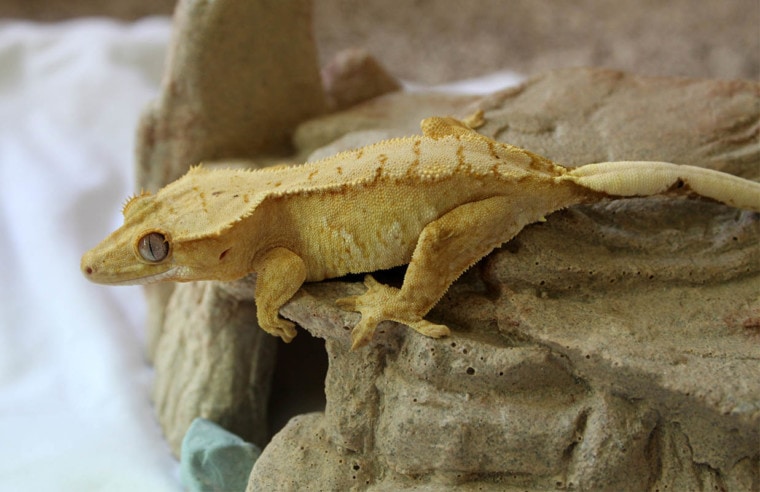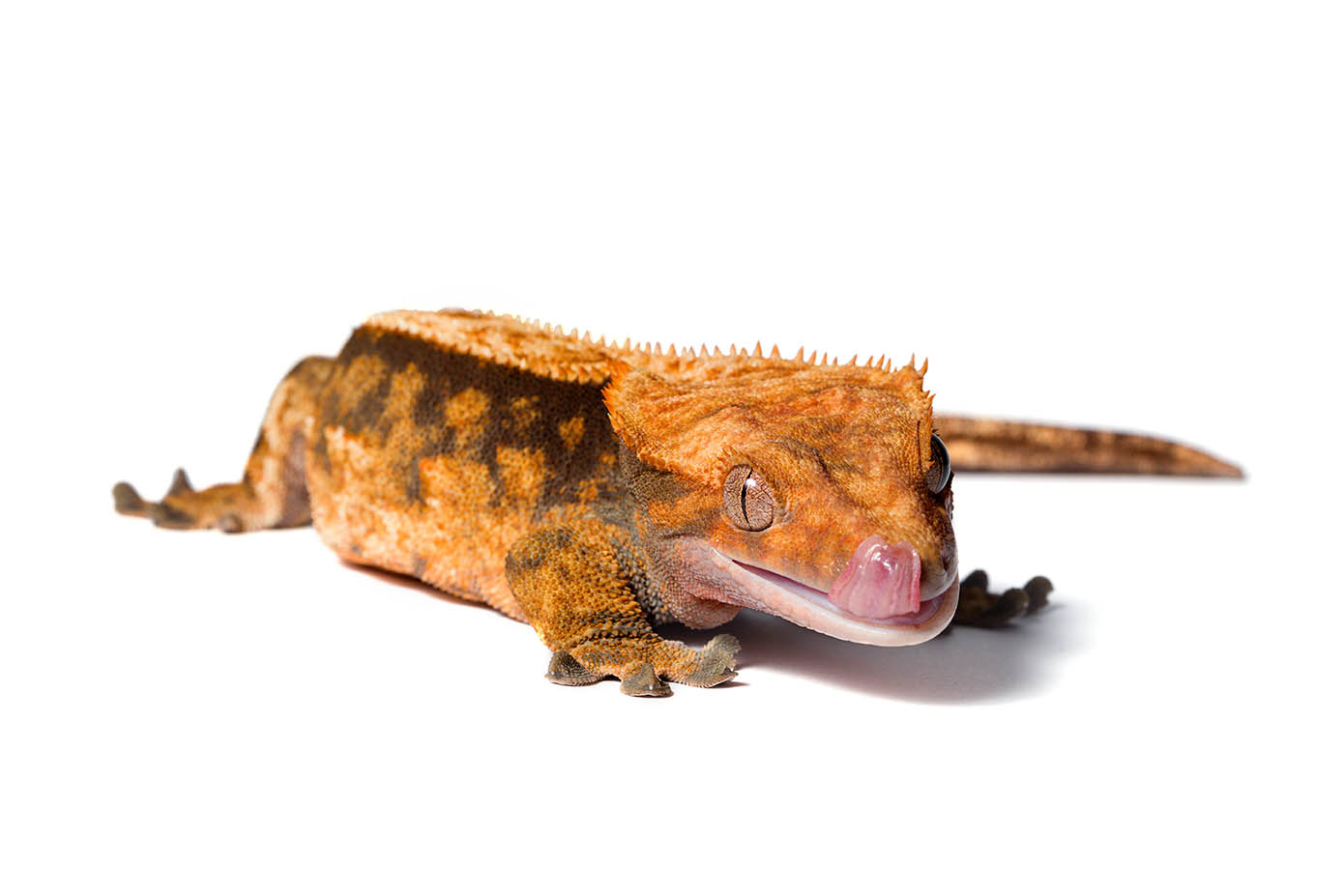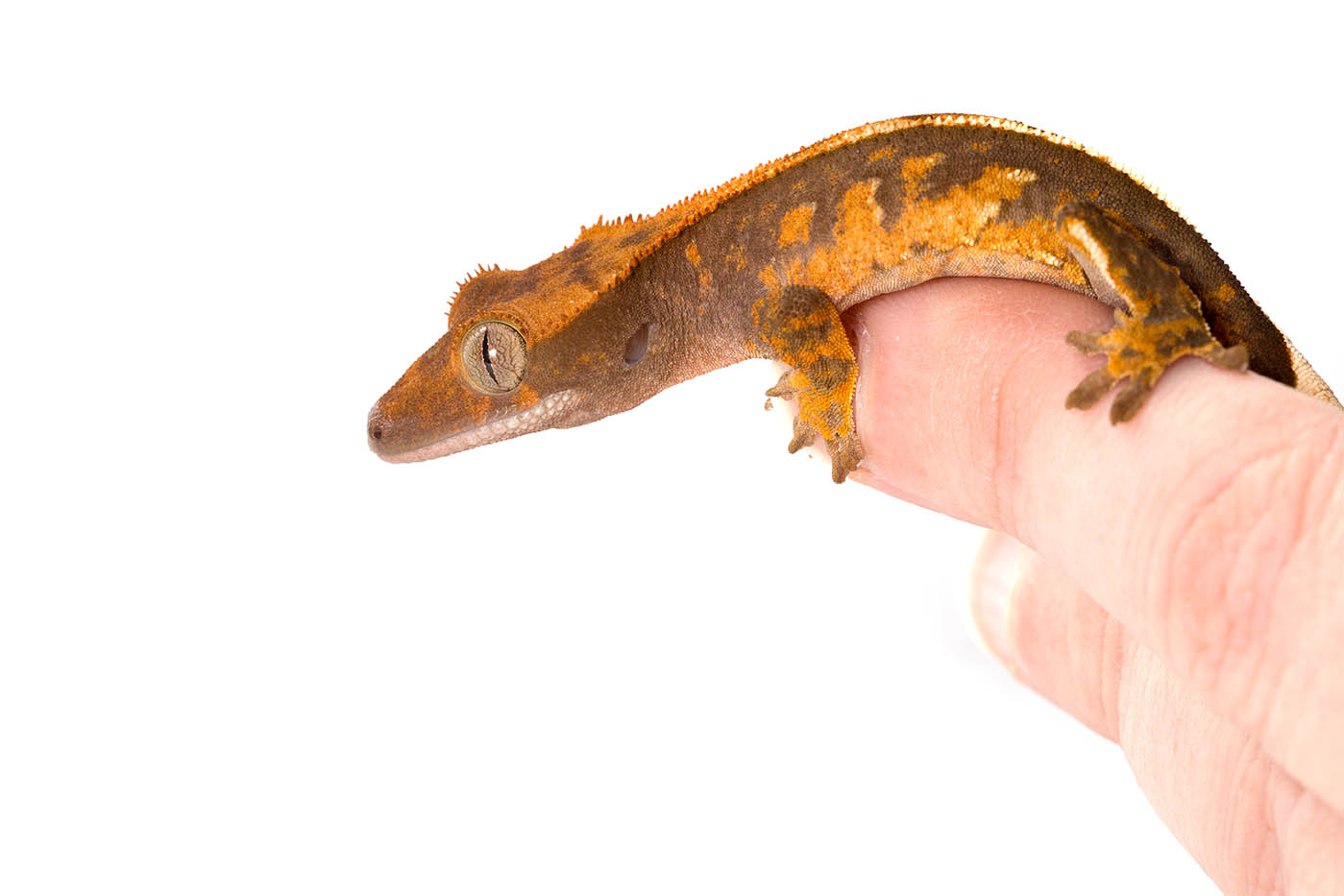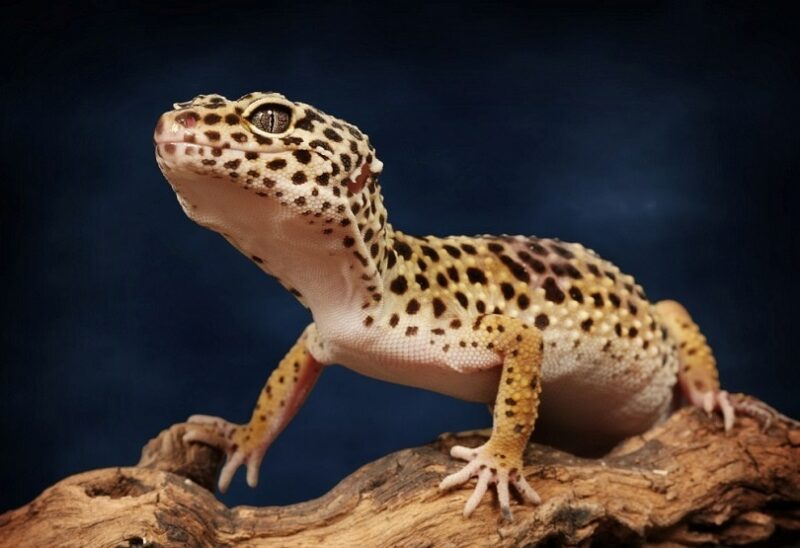
There are few critters as easy to take care of as the Harlequin Crested Gecko. Compared to other designer reptiles, they’re incredibly affordable, and they don’t take up nearly as much space!
But what do you need to do to take care of these small reptiles, and are they are the right fit for your home? We break down everything that you need to know here.
Quick Facts About the Harlequin Crested Gecko
| Species Name: | Correlophus ciliatus Guichenot |
| Common Name: | Harlequin Crested Gecko |
| Care Level: | Low |
| Lifespan: | 15 to 20 years |
| Adult Size: | 4 to 4.5 inches |
| Diet: | Crested gecko food, crickets, roaches, waxworms, and silkworms |
| Minimum Tank Size: | 20-gallon high tank |
| Temperature & Humidity | 72-78 degrees Fahrenheit and 60% to 80% humidity |
Do Harlequin Crested Geckos Make Good Pets?
When you’re looking for a reptile that’s extremely easy to care for, a Harlequin Crested Gecko is a great choice. However, if you’re looking for a pet that you can play games with or gives you overall companionship, a Harlequin Crested Gecko isn’t the way to go.
So, if you want a low-maintenance pet that’s fun to watch, it’s a great choice, but if you want more of a conventional pet experience, a Harlequin Crested Gecko isn’t for you.

Appearance
While a Harlequin Crested Gecko is considered a Crested Gecko, they have a unique color pattern that sets them apart. They have a cream color on both their sides and back, and this color contrasts sharply with their base color of dark red or near black. This gives them an incredibly unique look that hobbyists and collectors love.
How to Take Care of Harlequin Crested Geckos
Habitat, Tank Conditions & Setup
Tank
Harlequin Crested Geckos don’t need an extremely large tank, but it does need to have high walls. You can get a high 20-gallon tank with a screen top, but if you’re in an area with low humidity, then it’s best to get a closed enclosure to help retain humidity.
While you can get too small of a tank, you typically don’t have to worry about getting a tank that’s too large.
Lighting
As long as you feed your Harlequin Crested Gecko with a food that has vitamin D, you don’t necessarily need a special UVB light. However, giving any gecko a low level of UVB light is a good idea. Keep this light to about 5%.

Heating (Temperature & Humidity)
Unlike many other reptiles that require a heated environment, Harlequin Crested Geckos require a temperature between 72 and 80 degrees Fahrenheit, and a temperature gradient is required. Always leave one side of the tank unheated, as Harlequin Crested Geckos have no way to regulate their body temperature.
Keep the humidity level between 60% and 80% by misting the tank as much as necessary.
Substrate
While you don’t have to be particularly picky about the substrate, you need to go with something that can retain a decent amount of humidity. Substances like coconut fiber work well because they maintain humidity but are still relatively easy to clean.
Tank Recommendations
| Tank Type: | 20-gallon high sided tank; screen tops or fully enclosed are fine |
| Lighting: | A low-level UVB light (5%) |
| Heating: | 72-80 degrees Fahrenheit gradient, 60% to 80% humidity |
| Best Substrate: | Coconut fiber |
Feeding Your Harlequin Crested Gecko
Feeding a Harlequin Crested Gecko is incredibly easy. Some lizards require you to get various food sources and keep track of how much you’re giving them. With a Crested Gecko, all you need is a bottle of Repashy Crested Gecko Meal.
Mix this meal with water, and feed it to them two to three times a week. While you can supplement with crickets and other small insects, it’s completely optional. The Repashy Crested Gecko Meal comes with everything that your Crested Gecko needs to maintain a healthy diet.
Diet Summary
| Type of food | Percent of diet |
| Repashy Crested Gecko Meal | 95% to 100% |
| Crickets, mealworms, or other small insects (optional) | 0% to 5% |

Keeping Your Harlequin Crested Gecko Healthy
The most significant health concern that a Harlequin Crested Gecko might have to deal with is metabolic bone disease. This is the result of a severe calcium deficiency in their bones. While a well-rounded diet can help ward off this concern, some Harlequin Crested Geckos are more susceptible than others.
Other than that, environmental factors cause most of their health issues. From stress to dehydration and even parasites, you can prevent most of these concerns with proper care.
Common Health Issues
Lifespan
The average Harlequin Crested Gecko has a lifespan of 15 to 20 years while living in captivity. While this is a relatively long lifespan, it’s actually on the shorter side of things for a reptile. Still, keep in mind that you’ll likely need to care for your new friend for the next 2 decades before deciding to purchase one!
Breeding
There are few pets easier to breed than the Crested Geckos. The Harlequin Crested Gecko is no different, but keep in mind that even though it’s easy to breed these reptiles, that doesn’t necessarily mean it’s easy to make money.
When breeding, only add one male into the enclosure and opt for a high-quality stud. It’s also best to maximize genetic diversity by choosing unrelated Harlequin Crested Geckos whenever possible.
Keep in mind that Harlequin Crested Geckos can lay anywhere from 8 to 20 eggs in each breeding session.
Are Harlequin Crested Geckos Friendly? Our Handling Advice
Harlequin Crested Geckos are extremely friendly toward their human owners. However, if you decide to house multiple Harlequin Crested Geckos in the same enclosure, you need to ensure that you’re only housing females.
Multiple males in the same tank are prone to fighting, especially if females are in the tank too. However, various females in the same tank won’t present a problem. You can house a male and female together, but expect that you’re going to have babies.
Shedding & Brumation: What to Expect
Harlequin Crested Geckos will shed their entire skin at one time as long as their tank is at a proper humidity level. Not only that, but it’s best to have your Harlequin Crested Gecko go through a brumation during the winter months.
Lower the temperature a few degrees at a time over several weeks, but don’t let the temperature of the tank dip below 72 degrees. During this time, your Harlequin Crested Gecko might become more lethargic and have less of an appetite.
To get them to come out of brumation, you will need to increase the temperature a few degrees at a time over several weeks until the tank is back to the normal temperature.

How Much Do Harlequin Crested Geckos Cost?
The average cost for a Harlequin Crested Gecko varies by quite a bit. On the low end of things, you can find a Harlequin Crested Gecko for as little as $80. However, it’s not uncommon for high-end breeders to sell these unique critters for as much as $500!
While this is a huge price variance, it comes down to their availability in your local area.
Care Guide Summary
Final Thoughts
With the low costs associated with Harlequin Crested Gecko and how easy they are to take care of, it’s no wonder that breeders and hobbyists alike are flocking to the Harlequin Crested Gecko. Just keep in mind that these small little critters can live up to 20 years, so they’re not an investment for the short term.
Related Reads:
- How to Choose the Right Habitat Size for a Crested Gecko: A Guide
- Crested Gecko: Care, Pictures, Temperament, Habitat, & Traits
Featured Image Credit: stickyclawgeckos, Shutterstock










